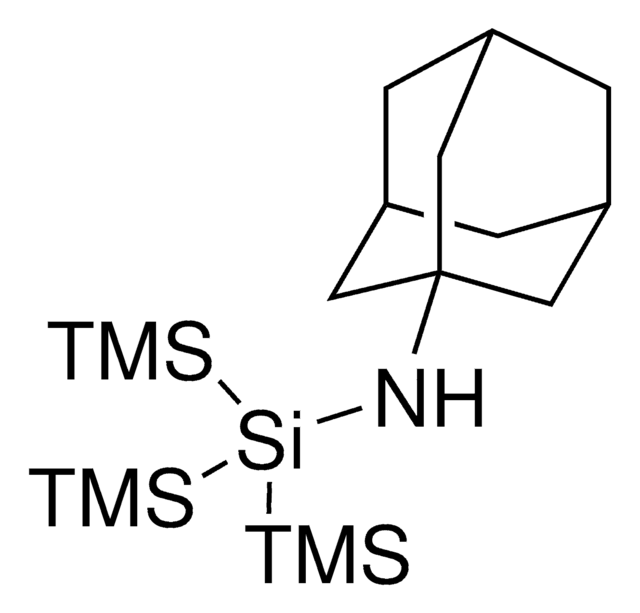736856
Tris(triethylsilyl)silane
Sinónimos:
1,1,1,3,3,3-Hexaethyl-2-(triethylsilyl)trisilane, 3,4,5-Trisilaheptane, 3,3,5,5-tetraethyl-4-(triethylsilyl)
About This Item
Productos recomendados
formulario
liquid
idoneidad de la reacción
reagent type: reductant
índice de refracción
n20/D 1.526
densidad
0.887 g/mL at 25 °C
temp. de almacenamiento
2-8°C
cadena SMILES
CC[Si](CC)(CC)[SiH]([Si](CC)(CC)CC)[Si](CC)(CC)CC
InChI
1S/C18H46Si4/c1-10-20(11-2,12-3)19(21(13-4,14-5)15-6)22(16-7,17-8)18-9/h19H,10-18H2,1-9H3
Clave InChI
WNGZMQFMMHZKBG-UHFFFAOYSA-N
Aplicación
It can be used as a reagent:
- In the radical coupling reaction to generate C-C bonds from alkyl-halogen compounds using iridium and nickel catalysts.
- To synthesize α-arylated product via cross-electrophile coupling reaction between α-chloro carbonyl and aryl bromide in the presence of nickel and iridium catalysts.
Palabra de señalización
Warning
Frases de peligro
Consejos de prudencia
Clasificaciones de peligro
Eye Irrit. 2 - Skin Irrit. 2 - STOT SE 3
Órganos de actuación
Respiratory system
Código de clase de almacenamiento
10 - Combustible liquids
Clase de riesgo para el agua (WGK)
WGK 3
Punto de inflamabilidad (°F)
Not applicable
Punto de inflamabilidad (°C)
Not applicable
Certificados de análisis (COA)
Busque Certificados de análisis (COA) introduciendo el número de lote del producto. Los números de lote se encuentran en la etiqueta del producto después de las palabras «Lot» o «Batch»
¿Ya tiene este producto?
Encuentre la documentación para los productos que ha comprado recientemente en la Biblioteca de documentos.
Los clientes también vieron
Nuestro equipo de científicos tiene experiencia en todas las áreas de investigación: Ciencias de la vida, Ciencia de los materiales, Síntesis química, Cromatografía, Analítica y muchas otras.
Póngase en contacto con el Servicio técnico















